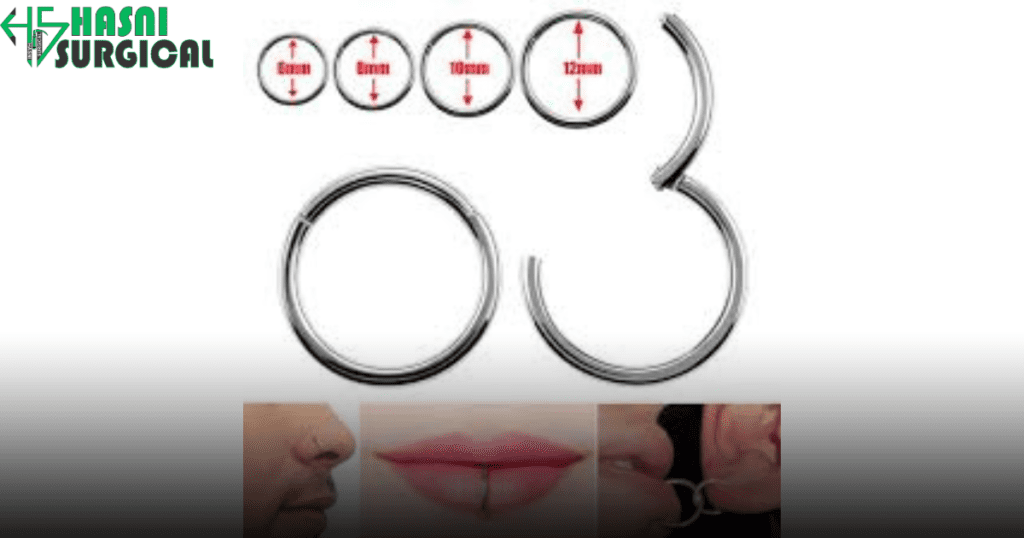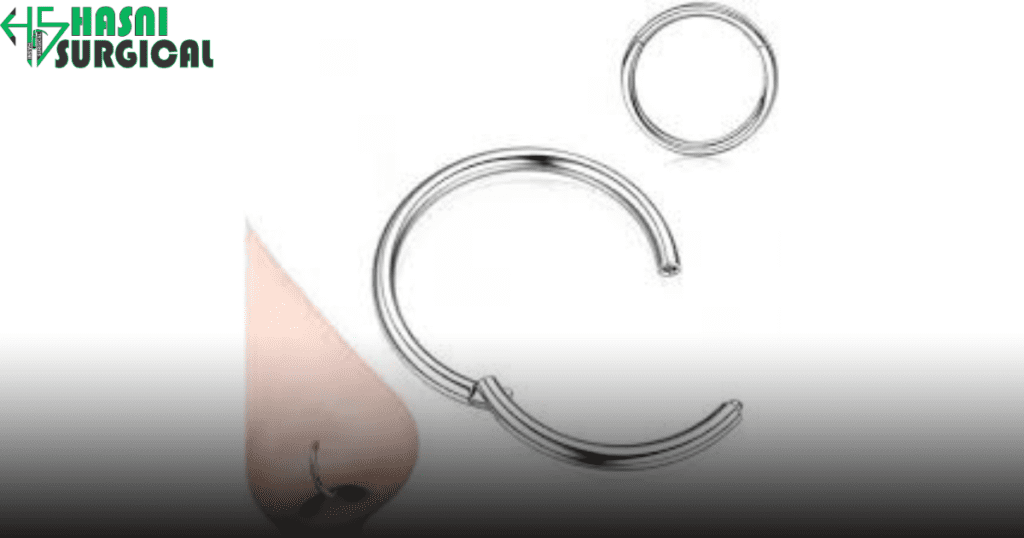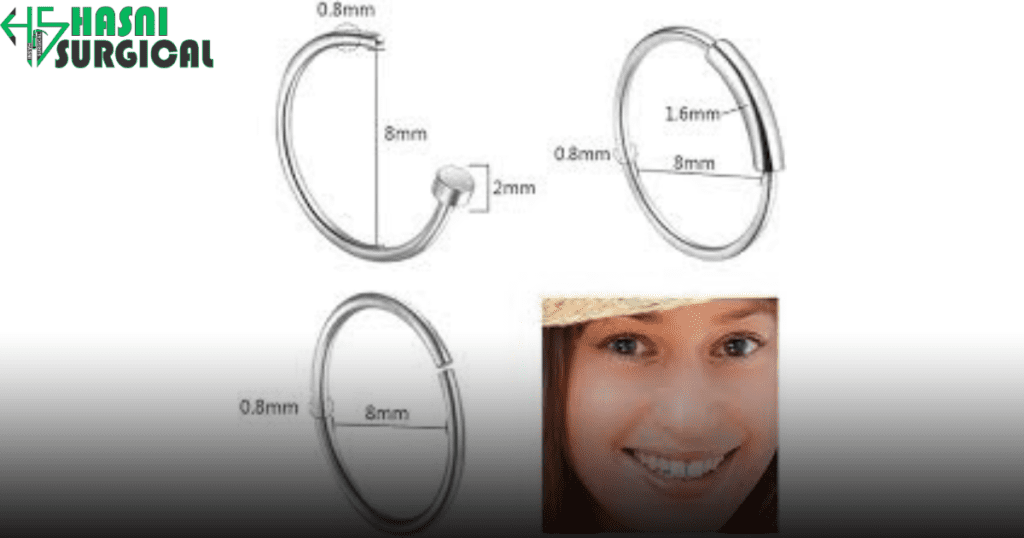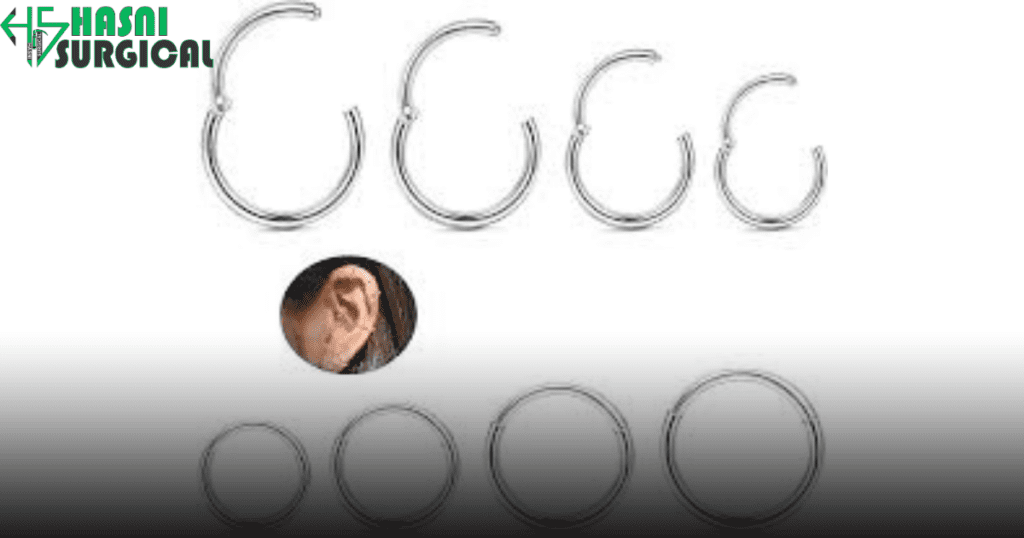Is surgical stainless steel good for piercings?
July 15, 2024 2024-11-21 6:30Is surgical stainless steel good for piercings?

Is surgical stainless steel good for piercings?
piercings
Piercing reflects personal and cultural influences, expressing self-expression.
It is strong, resists rust, and is less likely to cause allergic reactions. This makes it a good option for body jewelry, like piercings.
Surgical stainless steel contains a mix of iron, chromium, nickel, and molybdenum. Chromium helps prevent rust and corrosion, while nickel and molybdenum make the steel stronger and more resistant to wear. Common grades used in jewelry are 316L and 316LVM. These grades are biocompatible and safe for the body, causing fewer allergic reactions. The “L” in 316L stands for low carbon, which makes it more resistant to corrosion. The “VM” in 316LVM signifies vacuum melting, denoting higher purity.
Understanding surgical steel piercing composition and advantages is crucial when selecting body jewelry. While it has many advantages, like being hypoallergenic and durable, some people may still react to the nickel in it. Proper aftercare, such as regular cleaning and avoiding harsh chemicals, is essential to keep the jewelry in good condition and prevent infections.
Considering alternatives like titanium, nickel, and biocompatible plastics can provide more options, especially for those with metal sensitivities. Each material has its own benefits and drawbacks. Understanding the characteristics and benefits of surgical stainless steel and comparing it to other materials will help you choose the best jewelry for your needs

Is Surgical Steel Safe for Piercings?
Is surgical steel piercing safe for body piercings? Yes, surgical stainless steel is widely regarded as safe due to its hypoallergenic properties and resistance to rust caused by moisture.
Most people feel more comfortable and look stylized when wearing such rings of steel, but there are other variations. Most people feel more comfortable and look stylized wearing such rings of steel, but there are also higher-grade versions like 316L or 316LVM that people wear.
surgical stainless steel Allergy
Although surgical stainless steel is designed to minimize allergic reactions, the nickel content can still cause issues for some people. Symptoms of an allergic reaction include redness, itching, and swelling around the piercing site. Choosing high-quality surgical steel piercing can reduce the risk, but those with known nickel allergies should be cautious.
.
surgical steel piercing vs. Implant-Grade Titanium
Theres a lot of controversy among the people who wear surgical steeds or implant-grade titanium for piercings Which is better?
Basically, surgical stainless steel is an alloy that includes elements like iron, chromium, nickel, and molybdenum. It’s strong, durable, and has good resistance to rust. but its main problem is that it contains nickel, which can cause allergic reactions in some people.
But on the other hand, implant-grade titanium is completely nickel-free, making it a safer choice for those with metal sensitivities. The plus is that it is also lighter and has a higher resistance to corrosion, which means it lasts longer and is less likely to cause irritation then surgicla stella.

here are some of the key difference that are enough to give you the right choice for your piercings.
| Feature | surgical stainless steel | Implant-grade Grade Titanium |
|---|---|---|
| Material Composition | Contains iron, chromium, nickel, and molybdenum | Pure titanium or titanium alloys with no nickel |
| Nickel Content | Contains nickel (can cause allergies in some people) | Completely nickel-free (hypoallergenic) |
| Weight | Heavier | Lighter |
| Corrosion Resistance | High (due to chromium content) | Very high |
| Strength and Durability | Strong and durable | Very strong and durable |
| Biocompatibility | Good, but may cause issues for those with nickel sensitivity | Excellent (used in surgical implants) |
| Cost | Generally more affordable | Typically more expensive |
| Appearance | Bright, shiny finish | Can have a shiny or matte finish; various anodized colors are available |
| Common Uses | Body jewelry, surgical instruments | Body jewelry, surgical implants, medical devices |
| Aftercare Requirements | Regular cleaning and care | Similar cleaning and care are typically easier to maintain due to higher corrosion resistance |
| Popularity in Piercings | Widely used and accepted | Increasingly popular, especially for those with metal sensitivities |
Additionally, titanium is a bit more expensive than surgical steel piercing, but both of these materials had their own pros and cons, so in a preset situation, surgical stainless steel had a bit more of a hand than titaniums.

Advantages and Disadvantages of Surgical Steel Piercings
Surgical steel piercings is a growing activity around the world, though their are many advantages and disadvantages of this. Here are some of those we cover.
| Advantages | Disadvantages |
|---|---|
| Durability is a main advantage of surgical stainless steel; it is durable and long-lasting, which makes it ideal for jewelry that experiences daily wear and tear. | Nickel Filled The bad thing about surgical stainless steel is that the presence of nickel can trigger allergic reactions in sensitive body parts. |
| Cost-Effective Yes compared to titanium, surgical stainless steel is more affordable and easy to apply. | Heavy-weight surgical steel is heavier than titanium, which may cause discomfort for some people, especially near sensitive areas like ear and lips. |
| Resistance to Corrosion: The chromium content in surgical steel provides resistance to rust, maintaining the jewelry’s appearance and safety over time. | Another disadvantage of surgical stainless steel for piercings is that it can sometimes cause skin discoloration, especially in individuals with sensitive skin or those prone to reacting to metals. This discoloration may appear as a darkening or staining around the piercing site, which can be undesirable for aesthetic reasons. Therefore, while surgical steel is generally durable and affordable, potential skin reactions and discoloration should be considered when choosing jewelry for piercings. |

Surgical Steel Piercing Aftercare
Surgical Steel Piercing Healing
Proper care is crucial for the healing of surgical steel piercings. Keeping the piercing clean, avoiding irritants, and following the piercer’s aftercare instructions will promote smooth healing and reduce the risk of complications.
How to Clean Surgical Steel Piercings
To clean surgical steel piercings, use a saline solution or an antiseptic recommended by your piercer. Gently rinse the area and avoid twisting or moving the jewelry frequently, as this can delay healing and introduce bacteria.
Alternatives to stainless steel surgical steel
stainless steel surgical steel Alternatives for Piercings
For those who cannot wear stainless steel surgical steel, alternatives include implant-grade titanium, niobium, or bioplast. These materials offer hypoallergenic properties and are excellent for individuals with sensitive skin.
Hypoallergenic Piercing Jewelry
Hypoallergenic options like titanium, niobium, and bioplast minimize the risk of allergic reactions. They are especially recommended for initial piercings and those prone to metal sensitivities.

